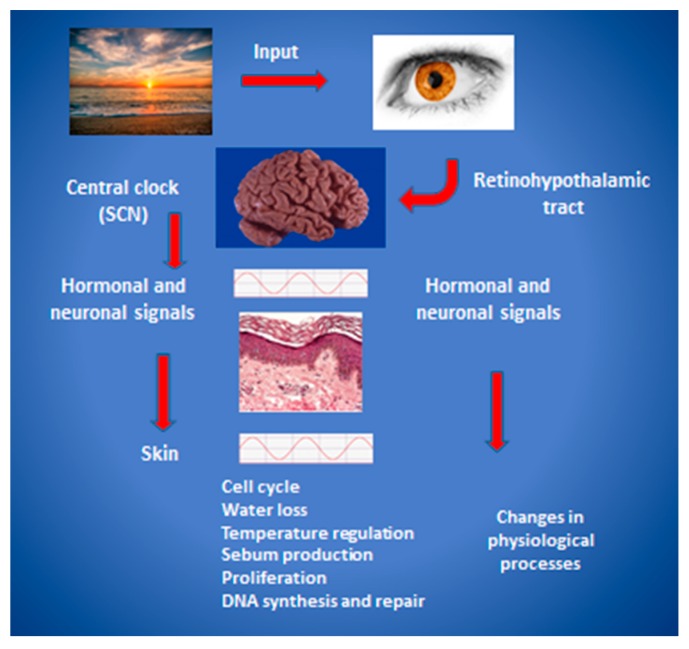Figure 1.
A model of hierarchical regulation and organization of the mammalian circadian clock. Light enters the retina and stimulates signaling via the retinohypothalamic tract to entrain the suprachiasmatic nucleus (SCN), located in the anterior hypothalamus. Hormonal and neuronal intermediaries then induce modulations of peripheral transcriptional and posttranslational responses that ultimately produce behavioral, metabolic, and physiologic output. The skin and its appendages are the focus in this figure, and key aspects of circadian regulation of physiological processes in the skin are listed. Modified from [7] with permission.

